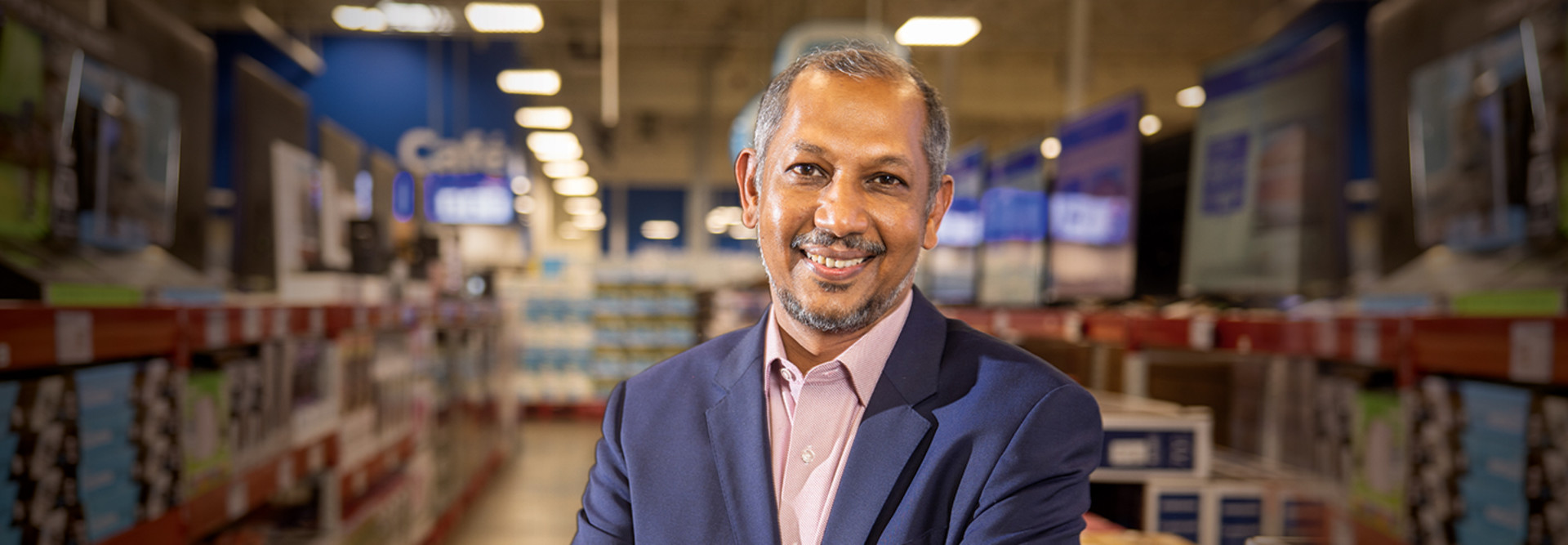From a supply chain perspective, then, the question was: How do you wire the different supply chain nodes differently so you don’t have a lot of out-of-stock items with all the club pickups happening? We started our ship-from-club program in early 2020. We launched the club pickup at scale by late 2020, and this year we started the deliver-from-club program, where we use gig workers who deliver right to people’s homes. If you look at all these new channels, continuing with our existing scan-and-go technology that we have for in-club shopping, it’s helping us connect a lot of dots. It enables us to serve our members in a very omnichannel way.
We also knew we’d have to think about something else: Now that we have our members shopping with us in a very different way and with all these brand-new channels, how does the supply chain—from the distribution centers to the clubs themselves—all need to come together to make this omnichannel experience happen in the best possible way for members?
BIZTECH: How did you answer that question?
BIDARKOPPA: For one thing, we’ve had a very long run as a retailer. We’re not a new business. That means we have lots of legacy processes and tools. And particularly with our distribution centers, we really wanted to leapfrog over what had been 20-year-old processes so that we could drive productivity. We wanted to reimagine and digitize those processes throughout the distribution and fulfillment centers.
So, we deployed a cloud-based warehouse management system and started reinventing those processes in the Arkansas distribution center, then replicated that across multiple centers. Then we took the same tack with the fulfillment centers, because for us to be able to drive at the pace and volume that our members were expecting of us, we could no longer follow the same old processes.
EXPLORE: Find out how automation is helping retailers manage inventory.
BIZTECH: What new technology did you deploy to reinvent your supply chain management process?
BIDARKOPPA: We brought in what I call the goods-to-person technology. It includes mobile robots, which are doing the picking, and a stationary packer. Basically, it’s an automatic storage and retrieval system that has robots picking items for customers and bringing them to the stationary packing technology. That provided us with about a 120-person productivity lift from what was happening before.
On top of that, we deployed continuous variable packaging. That’s a technology that essentially allows us to pack on demand based on the size of the item, whether it’s a single- or multi-item order, which saves a ton of waste on packing and filling material.
The third big thing happened in the clubs, because our supply chain extends from the distribution centers to the fulfillment centers to the clubs. We invested in a camera-mounted floor-scrubbing solution. Basically, these are robots that move around the floor and capture images of items around the club, gathering data on a number of different attributes.
READ MORE: Advanced analytics are helping companies deliver a better customer experience.
For example, we gather data that allows us to ensure we’re in compliance with our planograms. This will help us know if items are out of stock for the people who are shopping, and equally for associates who are packing for our ship-from-the-club program. This is unique in the industry, the way we have created this item recognition and inventory intelligence in the club.
Those are a few examples where we’ve brought in advanced technologies to solve some of these supply chain problems to provide a better experience for members.
BIZTECH: To what extent are you deploying artificial intelligence and predictive analytics in this process?
BIDARKOPPA: With the technology I just described, we use AI to measure the precise item location and the quantity we have in the club at any given time. Then, based on the gaps and on our sales intake, we’re able to provide that signal to replenishment and close that loop in order to bring that item to the club in a timely way. This is purely AI-based computer vision.
From a predictive analytics perspective, one example is with our sales of fresh prepared meals. Any grocer that does that has to ask, How much should we manufacture? If you make too much and don’t have demand, you’re probably throwing away a lot of food. If you don’t make enough, you have an unsatisfied member. So, we created this AI-based platform for fresh food where we can accurately predict how much fresh food we need to have, how much we need to buy and how much we need to prepare.
At the highest level, we have implemented sales and demand planning by forecasting what demand is going to be. Our forecasting algorithms predict exactly what needs to be replenished in what club at the right time. So, from demand planning all the way to our fresh sales tool, there’s AI embedded across the chain.
Click the banner below to receive exclusive cloud content when you register as an Insider.












